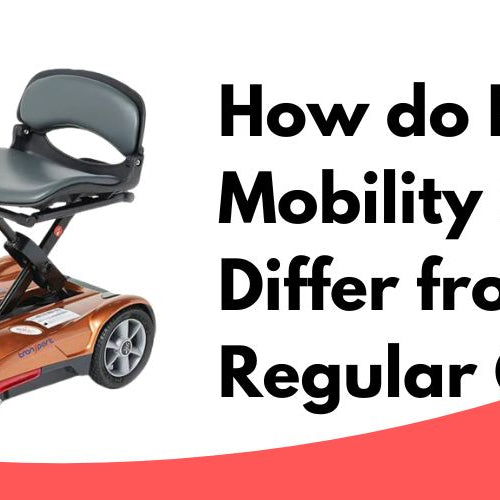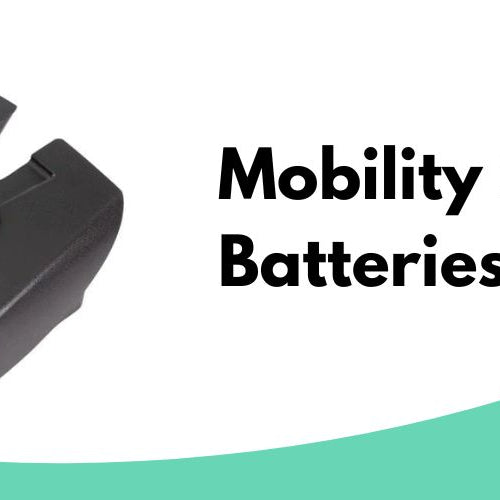Navigating the bustling city of London with a mobility scooter can be both convenient and challenging at the same time. For individuals relying on their mobility scooters for transportation, it's crucial to be aware of the rules and regulations governing their use on public transport, particularly London buses. This article aims to provide valuable insight on whether mobility scooters are permitted on London buses and the necessary guidelines that must be followed.
Transport for London (TfL) has made significant strides in becoming more accessible for individuals using mobility aids. Recent advancements have seen numerous mobility scooter models being granted permission for use on London buses, provided they meet specific criteria. According to Transport for All, approximately 86 models of mobility scooters are permitted to occupy the wheelchair space on London's buses. It is important to note that not all scooters are allowed; eligibility depends on meeting certain size and class requirements.
To ensure a smooth and hassle-free journey on London buses with a mobility scooter, individuals must adhere to the guidelines set forth by TfL. In addition to having an approved scooter model, users must also obtain a Mobility Aid Recognition Scheme permit. This permit helps bus drivers identify approved mobility scooters and streamlines the boarding process for users. More information regarding eligibility, permits, and a list of approved mobility scooters can be found at the TfL website.
Mobility Scooters on London Buses: Are They Allowed?
Mobility scooters offer a vital means of transportation for individuals with disabilities, making it important for them to access public transportation systems like London buses. However, the allowance of mobility scooters on buses varies, depending on factors like size, type, and the individual bus route.
In general, mobility scooters are allowed on London buses, as long as they meet certain requirements. For instance, the scooter should be a Class 2 type, which is specifically designed for pavement use and has a maximum speed of 4 mph. Additionally, mobility scooters must adhere to maximum dimensions and weigh no more than the bus limit, ensuring they can safely and comfortably be accommodated on-board.
Before planning a journey on a London bus with a mobility scooter, riders should familiarize themselves with the specific guidelines laid out by Transport for London (TfL). These guidelines cover factors like turning spaces, secured parking areas, and how to travel safely with a scooter on a bus.
When boarding a bus with a mobility scooter, passengers should stay aware of the rules around priority seating areas, which are designated for other commuters with disabilities and need to be respected. In some cases, it may be necessary for a mobility scooter user to fold their scooter and use one of the designated seating areas.
It's important for mobility scooter users to recognize that not all bus routes may be accessible to scooters. In such instances, it's advised to plan the journey in advance and explore alternate transportation options, like taxis or London's Dial-a-Ride service, which offers door-to-door transportation for people with disabilities.
In conclusion, mobility scooters are generally allowed on London buses, but there are specific requirements and guidelines that need to be followed. By adhering to these rules and planning ahead, individuals with mobility scooters can enjoy a smooth and accessible journey on London's public transportation system.
Accessibility Features of London Buses: Boarding and Exiting
Ramps and Kneeling Functions
London buses are designed to be accessible for all passengers, including those using mobility scooters. One key feature is the availability of ramps on all buses. These ramps can be found at the entrance of each bus, providing a smooth and safe means of boarding and exiting for those using mobility scooters. Some buses are also equipped with a kneeling function, which lowers the bus closer to the ground to minimize the incline of the ramp and make it even easier for passengers to board.
Priority Seating and Space
Another important aspect of accessibility on London buses is the provision of priority seating and space for those using mobility scooters. These designated areas are clearly marked and located near the entrance of the bus, making it more convenient for passengers to get on and off. Priority seating can be folded up to create even more space, ensuring that mobility scooter users can comfortably park their scooters during the journey.
However, it is important to note that not all mobility scooters are allowed on London buses. There are certain size and weight restrictions in place for the safety and convenience of all passengers. Generally, mobility scooters that are small enough to fit into the available space and can be maneuvered easily inside the bus are permitted. It is recommended to check with the individual bus operator and their specific guidelines to ensure that your mobility scooter is allowed on board.
In summary, London buses are designed with accessibility features such as ramps, kneeling functions, and designated priority seating and space to accommodate passengers using mobility scooters. However, be sure to confirm with the specific bus operator if your scooter meets the size and weight requirements for boarding.
Guidelines for Mobility Scooter Users
Size Limitations and Requirements
Mobility scooters are now permitted on London buses, providing they meet certain size requirements. Transport for London (TfL) has identified approximately 86 models of mobility scooters that can fit into the wheelchair space on buses. It is essential for mobility scooter users to ensure their scooters meet these size requirements before attempting to board a London bus.
The Equality Act requires all buses to have space for at least one wheelchair or scooter towards the front of the vehicle, as well as low floors to facilitate easy access. However, it's crucial to note that size limitations and requirements may vary depending on the specific bus route and vehicle type.
Boarding and Exiting Etiquette
When planning to use a mobility scooter on London buses, it's important to follow proper boarding and exiting etiquette to ensure a smooth and safe experience for both the mobility scooter user and other passengers. Here are some tips for mobility scooter users:
-
Wait for passengers to exit: Before attempting to board the bus, allow other passengers to disembark first. This creates ample space for the mobility scooter to maneuver into the designated area.
-
Request assistance if needed: If necessary, don't hesitate to ask the bus driver for assistance in boarding and securing the mobility scooter in the designated area.
-
Position the scooter securely: Once on board, position the mobility scooter in the designated space, usually towards the front of the bus, and apply the brakes to prevent movement during the journey.
-
Alert the driver when exiting: Prior to reaching the desired stop, notify the bus driver that you'll be exiting with a mobility scooter. This gives them enough time to prepare and potentially offer assistance if needed.
-
Exit the bus carefully: Ensure the pathway is clear before attempting to exit the bus. Keep in mind the needs of other passengers who may also be disembarking at the same time.
By following these guidelines and understanding the size limitations and requirements, mobility scooter users can confidently and safely utilize London buses for their transportation needs.
Alternative Accessible Transport Options
In addition to mobility scooters now being permitted on London buses, there are other accessible transport options available for people with reduced mobility.
London Underground and Rail Services
The London Underground and rail services offer a range of accessibility features to cater to the needs of individuals with limited mobility. Many stations provide step-free access, making it easier for wheelchair users and those with mobility scooters to navigate. Transport for London states that wheelchairs and some approved mobility scooters can be used on Tubes, trains, trams, and select boat services like Thames Clippers. It's always a good idea to check the accessible journey planning resources provided by TfL to ensure a smooth journey.
London Taxis and Private Hire Services
For those who prefer a more private mode of transportation, London offers accessible taxi services and private hire vehicles. London's iconic black cabs are designed to accommodate wheelchairs and typically have ramps, making boarding easier for those with mobility scooters. Alternatively, private hire services, such as Uber, also provide special options for passengers with mobility requirements. These services, known as UberWAV (wheelchair accessible vehicles), can be requested through the Uber app and come equipped with the necessary accessibility features.
In conclusion, there are various options available for individuals with reduced mobility to move around London. From allowing mobility scooters on buses, to accessible taxi services and Tube stations, the city is continually working towards being more inclusive and convenient for all its visitors and residents.
Frequently Asked Questions
Mobility scooters on London buses policy
Mobility scooters are now permitted on London buses, allowing more people to take advantage of the public transportation system. Scooter owners need to call TfL's Travel Mentoring Service, who will ask a series of questions to determine if the scooter is suitable for bus travel. This helps ensure the safety of both the scooter user and other passengers. 1
Mobility aid card usage
Although not required, it is recommended for mobility scooter users to carry a Mobility Aid Card. This card provides information about the scooter's size and suitability for bus travel. It can be especially helpful for drivers who may be unsure if a particular scooter should be allowed onboard.
Class 2 mobility scooter restrictions
While mobility scooters are allowed on London buses, there may be some limitations depending on the size and type of scooter. Class 2 scooters are generally considered appropriate for public transport use due to their size and power restrictions. It is important to consult with TfL's Travel Mentoring Service to ensure your scooter meets the necessary requirements before attempting to travel on a bus. 2
Wheelchair users on buses
London buses are equipped with space for one person using a wheelchair, ensuring accessibility for all passengers. Wheelchairs that are up to 70cm wide and 120cm long can fit comfortably on London buses. Be aware that if the designated wheelchair space is occupied, mobility scooter users may need to wait for the next bus with available space. 3
London taxis and mobility scooters
London taxis are a convenient and accessible means of transportation for mobility scooter users as well. Most London taxis are equipped to accommodate mobility scooters and their drivers are trained to assist passengers with these devices when entering and exiting the vehicle.
Using mobility scooters on London Underground
While there are some mobility scooter restrictions on London buses, it is generally more challenging to use mobility scooters on the London Underground due to the variable accessibility of stations and train carriages. It is advised to check accessibility information for the specific station and line you plan to use before attempting to travel with a mobility scooter on the London Underground.
If you have any questions, email or call us at Mobility Nest.






Leave a comment